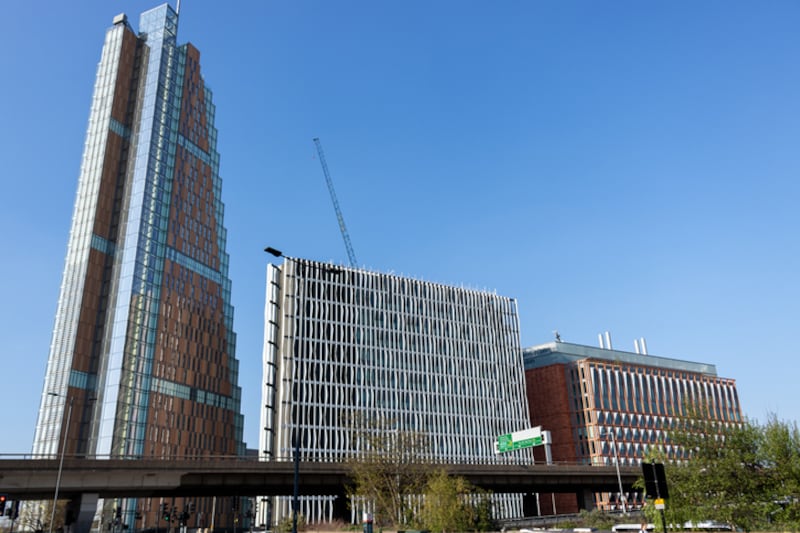Despite an obsession with world university rankings in higher education, most college presidents like to give the impression they are above such tawdry business. To his credit, Prof Hugh Brady, president of Imperial College London, dispenses with any such pretence.
He is still basking in the afterglow of Imperial securing second place in the world in the Quacquarelli Symonds (QD) rankings of global universities earlier this month, toppling not just Oxford and Cambridge but Harvard as well. Massachusetts Institute of Technology (MIT) was in first place.
“Generally, people were very pleased,” says Brady, former president of UCD. “There has been a kind of outpouring of congratulations from Imperial graduates, partners and friends from across the globe... I’ve been at Imperial for two years, but even before that it has been an institution on an upward trajectory.”
Imperial, founded in 1907, started out with a modest mission statement: “to be useful”. It specialises in Stem subjects – science, technology, engineering and mathematics – and business, and its 23,000 students are among the most sought-after graduates in the UK.
READ MORE
Its towering new White City campus, on the site of the former BBC headquarters, has attracted biotechnology and life science start-ups along with the UK head office of Novartis.
The rise of Imperial reflects how colleges which started out as less prestigious vocational institutions with a focus on science and technology are powering past elite universities with hundreds of years of history and tradition.
MIT and California Institute of Technology (ranked 10th) made the breakthrough some years before, while ETH Zurich – Albert Einstein’s alma mater – is also in the global top 10 (in seventh place).
Just as big tech has taken over many industries, science and technology is reshaping the world of education.
This focus of these types of universities, Brady says, is key to addressing the “grand challenges facing humanity”, such as sustainability, water, food security, pandemic preparedness.
“Technology will have to be at the heart of the solutions for all of those. Increasingly, universities with a heavy technological focus are seen as key drivers and catalysts for inclusive economic growth... and that principle applies both to London as it does to Dublin, Boston or Berlin.”

Despite Imperial’s global focus, Brady – who still has his family home in Dublin – keeps a close eye on Irish higher education.
A former associate professor of medicine at Harvard, he was appointed president of UCD at the age of 44, the youngest in the college’s history. Dubbed by some as the Michael O’Leary of higher education due to his no-nonsense management style and willingness to take unpopular decisions, he achieved impressive results.
Under his 10-year term, which ended in 2013, he helped transform UCD from a sleeping giant into a leaner, fitter, research-intensive institution which broke into the world top 100 for the first time. (UCD was ranked 126th in latest rankings.)
He went on to be appointed vice-chancellor at Bristol University in 2015, before taking up his post as president of Imperial in 2022.
He has three 28-year-old sons – triplets: one recently graduated from UCC, another is working in a Dublin-based tech start-up and the third is based in London. When he hears of their college experiences, he worries for the future of Irish higher education.
“Talking to my own sons and their friends, it’s clear that class sizes have got bigger, you have fewer tutorials. I mean, everything – just the quality is slipping,” Brady says.
The Irish system, he says, is “stressed financially” by comparison with higher levels of funding enjoyed by top US and Asian universities.
While the UK and Europe have their challenges, he says they have “held their nerve” and boosted investment in top research-intensive universities, recognising their importance as sources of talent, research and innovation.
“By comparison, Ireland’s trajectory of investment in its top research-intensive universities is going the opposite direction and could possibly be further compromised if funding is diverted to the newly formed ‘technological universities’,” he says.
Irish research funding – which Brady says was internationally competitive until the financial crash – has fallen badly behind the UK and top European countries.
A transformative funding programme – the Chuck Feeney-inspired Programme for Research in Third Level Institutions (PRTLI), which fostered world-class research and reversed a brain drain of top talent – was discontinued.
The total research budget for Science Foundation Ireland (SFI), meanwhile, is less than Imperial’s research income alone. “That’s just not good enough... the whole system is vulnerable,” Brady says.
In addition, core funding for universities – slashed during the economic downturn – has not fully recovered, while employment restrictions mean Irish colleges have suffered a loss of autonomy. Despite this, Brady feels Irish universities have done a remarkable job.
Over the past decade they have boosted their income from international students to compensate for “wholly inadequate funding” linked to low tuition fees and very modest Government contributions, he says.
[ Trinity is highest-ranked Irish university despite slipping in world standingsOpens in new window ]
So, how does this impact on students in Ireland? Simple, says Brady. “There’s a lower quality student experience ... less small group teaching, poorer IT, physical and lab infrastructure, and a much more limited range of research and innovation opportunities,” he says.
“Irish universities still hold on to top Irish school leaver talent and do a great job with limited resources but, comparatively speaking, the quality of experience is slipping and is only going to get worse over time.”
He says this has implications for Ireland’s ability to provide multinational companies with the talent pipeline they need and for the productivity of indigenous enterprise. “One of the problems is that the damage is gradual, it happens over time and therefore may not be recognised until it’s too late,” he says.
“Therein lies the difficulty for politicians – funding higher education is not readily apparent to voters and is not seen as a vote winner, yet it is mission-critical for the future competitiveness of the Irish economy.”
With a general election on the horizon, he feels there is a chance to shape a national conversation on how we can boost our universities, innovation and, ultimately, reduce our overdependence on foreign direct investment.
With rising nationalism, protectionism and the possibility of a Trump presidency, he says, these are urgent considerations.
“If I was thinking about the future of my kids, it would be, what is plan B? It would be irresponsible not to develop a parallel plan around building your own companies, building up an indigenous tech sector to a much stronger and more sustainable level.
“Something is needed to break the deadlock,” he says. “Perhaps cross-party support for a commission or citizens’ assembly to focus on key measures needed to secure the competitiveness of the Irish innovation ecosystem... [we need to] broaden the debate so that the interdependencies can be appreciated and the link to economic growth made.”
- Sign up for push alerts and have the best news, analysis and comment delivered directly to your phone
- Join The Irish Times on WhatsApp and stay up to date
- Listen to our Inside Politics podcast for the best political chat and analysis


















